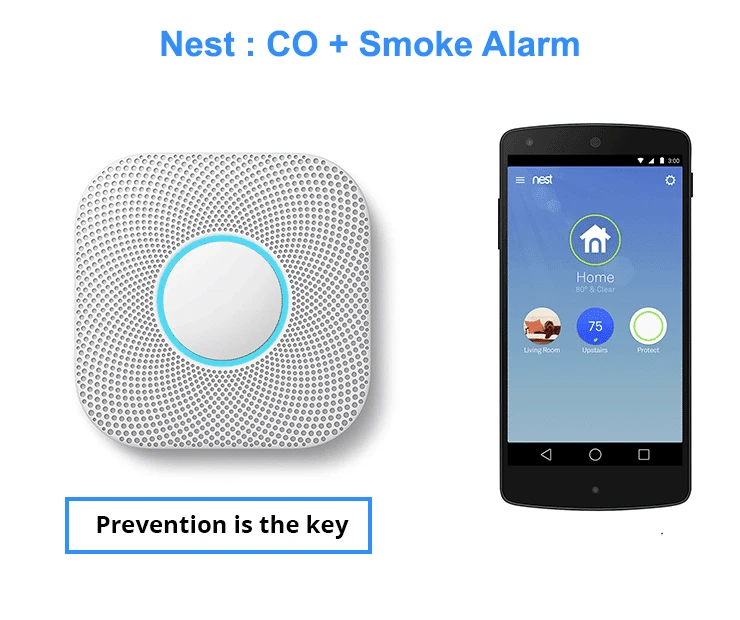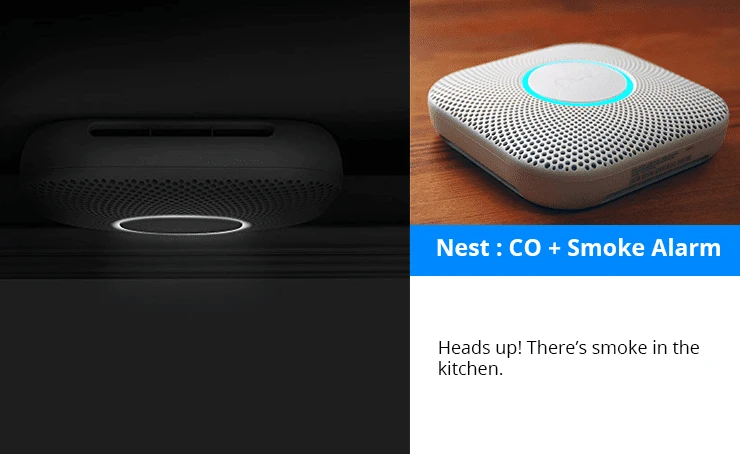This article discusses where carbon monoxide comes from. At the end of this article, you should understand the dangers of carbon dioxide and methods for protecting yourself.

Where Does Carbon Monoxide Come From?
Carbon Monoxide, also denoted as CO is a colorless, odorless gas, produced when there is incomplete combustion of materials containing carbon (plastic for example). It comprises one carbon atom and one oxygen atom linked by a triple bond made of two covalent bonds and one dative covalent bond. This makes it denser than air and is highly flammable. Carbon monoxide forms when there is inadequate oxygen that is required during combustion to produce carbon dioxide. This is the case when a combustion engine works in an enclosed space.

The body produces carbon monoxide naturally by metabolism but in low quantities. It is highly toxic at over 35-ppm density and has proven to be fatal in server CO intoxication.
Inhaling fumes from burning charcoal possibly causes mild or server carbon monoxide poisoning, accounting for most air pollution-related deaths.
However, more than half of these deaths occur in domestic situations.
What are the Symptoms of Carbon Monoxide Poisoning?
A portion of CO related deaths results from exposure to automobile exhaust fumes, improper ventilation and charcoal fumes, but most result from fires.
Inhaling solvents and paint removers may cause poisoning.
Individuals most at risk of such poisoning are:
- Children sat at the back of a pickup truck.
- Factory workers interacting with coal-powered generators.
- Mill workers interacting with powered machines.
- A firefighter who comes across fire difficulties frequently.
- Drives of public transportation in industrial cities.
You or your loved ones are at risk every day because of how difficult it is to prevent fires.
What is Carbon Monoxide Poisoning?
Exposure to the CO fumes binds with the hemoglobin (carries oxygen in red blood cells) in place of the oxygen. Absorption of CO through the lungs starves your body off oxygen that may lead to nerve system damage. According to research, different people have a different tolerance level of toxic gas. Smokers have higher tolerance levels due to their constant exposure to smoke. At 0.0035%, carbon monoxide level, CO intoxication begins. This is relatively mild intoxication and usually leads to headache, dizziness, and nefarious effects in the long term.
Exposure to a 0.08% concentration (air clouded by smoke and smell of burning objects) may cause aggressive symptoms. It is crucial to distance yourself from the smoke.
Symptoms of Carbon Monoxide Poisoning:
- Nausea
- Vomiting
- Convulsions
- Heart-rate increase
- Clouded judgment
- Confusion
- Short breath
Exposure to extreme concentrations may make you faint or fall into a coma, hence avoiding such situations.
Testing For Carbon Monoxide
Time is crucial when dealing with possible carbon monoxide poisoning. The following tests can determine the amount of carbon monoxide (CO) in the blood.
- CO blood test
- CO blood gas
- Arterial blood gas
These tests can ascertain your diagnosis and determine the amount of carbon monoxide exposure.
Testing CO poisoning is easy as doctors run these tests as soon as a possible CO poisoned patient comes to the hospital. Delayed diagnosis may cause irreparable damage.
Frequently checking for CO presence in the air is import as you can move away from the unwanted intoxication. Be alert with wood-burning stoves as we discussed earlier how using such things indoors might be fatal.
Installing a Carbon Monoxide & Smoke Detector
Install a CO detector in each room, hallway, and corridor to improve the awareness of toxic smoke spreading. There are many detectors in the market, mostly differentiated by their level of efficiency. It is essential to do research and ensure you are picking up a suitable model for you.
It is essential to follow instructions as per the user manual when installing the detector. You need to change the batteries frequently for it to maintain optimum functionality. It is best to choose a model that will work for you.
Nest Carbon Dioxide Detector (and Smoke) | 2nd Generation
Nest Protect has a human voice that can warn you if it detects intoxicated gas. It helps prevent a small incident like burning toast from magnifying into a burning toaster disaster.

Features:
- Voice alert
- Included phone alerts:
- Smoke detection
- Low battery
- CO detection
- Sensor failure
- Split spectrum sensor
- Nest App
- App silent mode
- CO detection
- Voice alert
- The product lifetime is ten years.
Built-in Tech Features: Sound check, Emergency video record, Nightly promise, Self-test, Bright path light, Steam check, Wireless connect, Safety history, Gives instructions, Home report, Emergency shutoff, Emergency video record.
This is a re-designed model packed with a hypersensitive smoke sensor. The device can be controlled wireless from a distance. It is possible to silence the detector using the Nest app from your phone should it be triggered by the presence of smoke or low batteries. It sends the same alert to your phone requesting you to accomplish different tasks.
The Nest Detector has a built-in human voice that produces sound alerts in some predefined sequence. The detector has two wavelengths of light able to detect both fast and slow-burning fires.
The Nest Detector uses a discrete sound check every month to ensure its sirens and speakers are working as expected. The device can last up to a decade while checking its sensors and batteries 400 times a day.
The Nest Detector has a programmed, bright path light that remembers your usual path and guides you along corridors at night. This wholesome feature is not only essential but seamlessly blends in with your house design.
It has algorithms and humidity sensors that can differentiate between smoke and steam, ignoring steam from a hot shower. This detector can work with other Nest products, making it one of the most efficient detectors in the market.
Contact us today for more information on CO poisoning or the Nest 2nd Gen Smoke detector.
Sensors | Nest Carbon Monoxide Smoke Detectors
- Split-Spectrum sensor (450nm and 880nm wavelength)
- CO sensor
- Heat sensor
- Humidity sensor (± 3%RH)
- Occupancy sensor (120º field of view-20 feet)
- Ambient light sensor (1-100k lux dynamic range)
- Multi-directional microphone (70dBA SNR)



